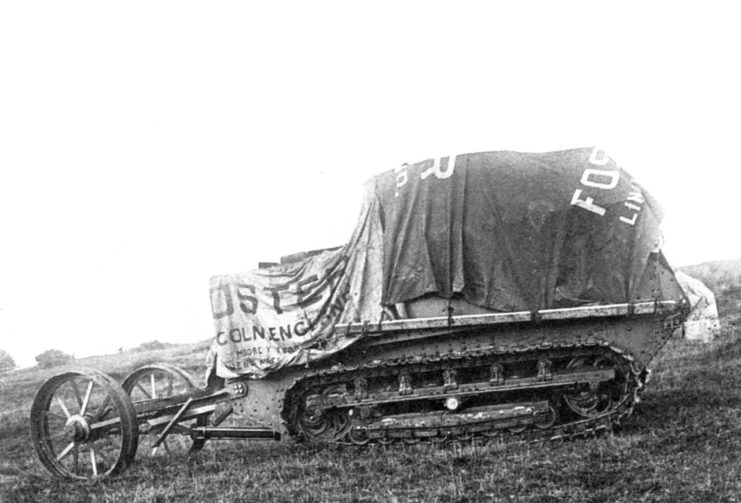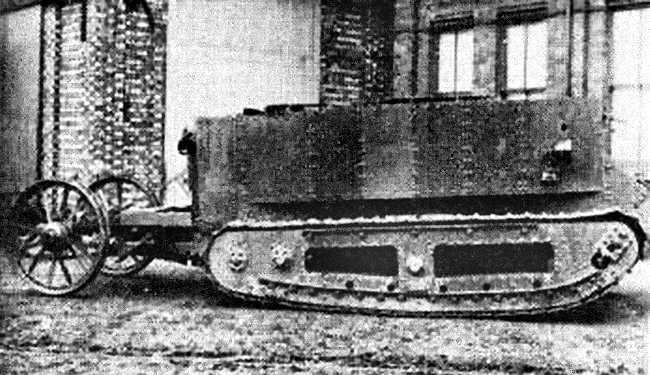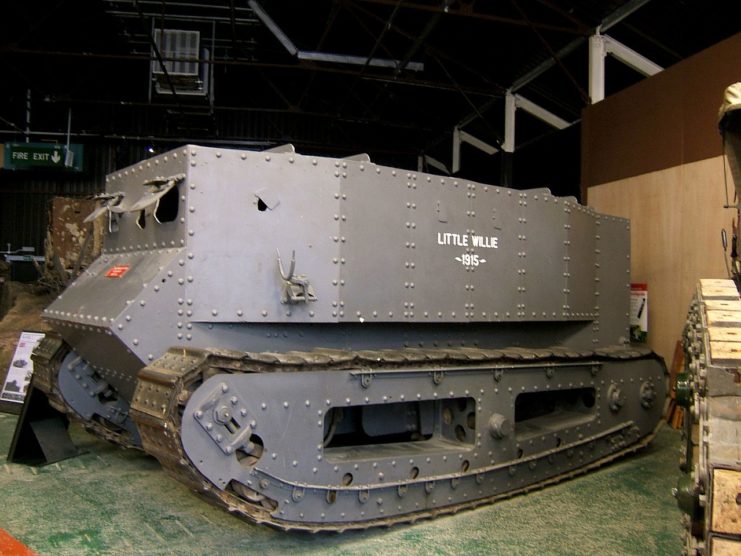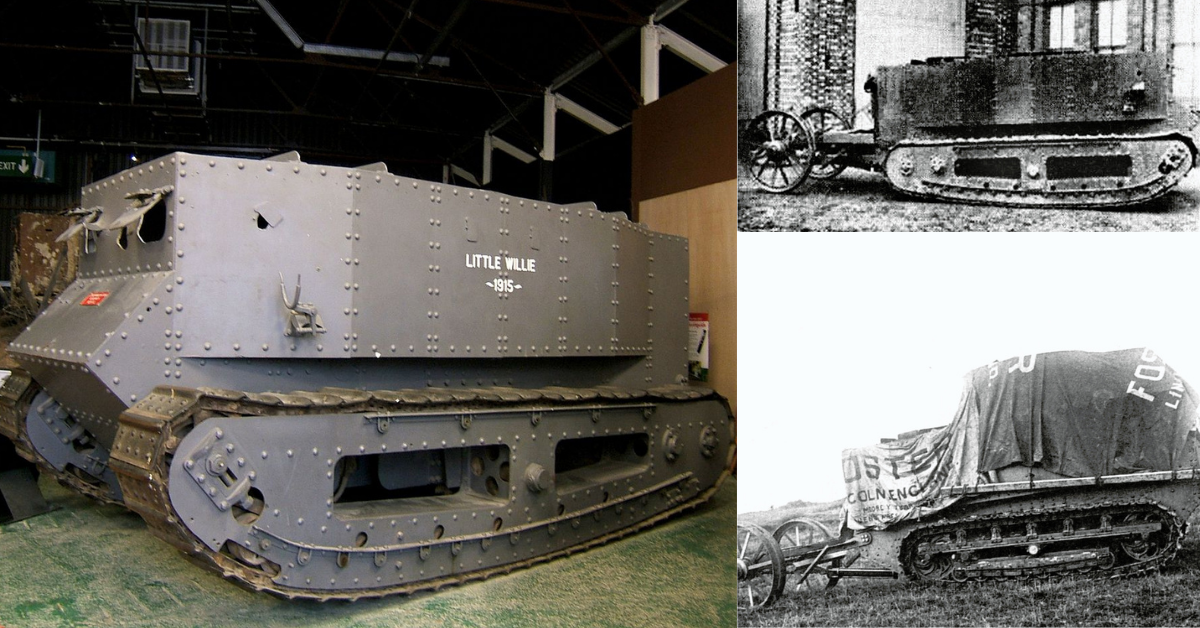Virtually all militaries around the world today field some type of tank, or a variation of one for certain tasks. No matter what vehicle this is, either the Challenger 2, M1 Abrams, T-62 or T-14 Armata, all of them relate back to one design: the Little Willie.
Lincoln N0.1 Machine

Britain’s Little Willie claims the title of the world’s oldest tank, being assembled and driven over a century ago. While it holds this title, it was not a combat vehicle, but a prototype, that was pivotal in the eventual creation of the famous rhomboid tanks that rolled across WWI battlefields.
The idea of a tracked armored vehicle had been floated around before WWI, but no country began seriously investigating it until 1915 when Britain established the Landship Committee. At the time, the Royal Navy was the best source of experience and knowledge about such a machine as so many on the committee were naval officers.
The agricultural machinery company William Foster & Company of Lincoln were contracted to design the vehicle.

At first, the company sourced pre-built track units from the Bullock Creeping Grip Tractor Company in the US. Assembly of the vehicle, known then as the Lincoln No.1 Machine, began in August of 1915 and was ready for testing in September.
Immediately, the vehicle experienced issues. When crossing a trench, one of the vehicle’s main reasons to exist, the lower section of track would sag into the void below. This sagging would cause the track to slide off its path and either jam the drivetrain or simply be thrown off, both of which put the vehicle out of action. In addition to this, the Bullock tracks were simply too weak for the task.
A much better track type was designed by the end of September. This offered better traction and greatly reduced the frequency that tracks were thrown off. Despite this, the vehicle had no suspension of any sort, making for an extremely uncomfortable ride for the crew, of which there was likely to be 6.
Two drivers were needed, one to control the steering wheel, clutch, primary gearbox, and the throttle while the other operated the brakes.
As it was only a prototype that would never see combat, the Lincoln No.1 Machine wasn’t actually armored. Instead, boilerplate was used in the place of armor plating, riveted to an iron-angle frame. Still, the vehicle weighed 18 tons.
It was powered by a rear-mounted 13 liter 6 cylinder Daimler-Knight engine that produced 105 hp, giving it a top speed of just 2 mph. The engine sent its power to the drive sprockets via a tremendously complicated series of gears and chains, although this did have the advantage of absorbing shocks throughout the system.
The Lincoln No.1 Machine originally featured a turret on top of the hull, that was intended to house a Vickers 2-pounder (40 mm) Maxim gun and a number of machine guns. The turret was non-rotatable in the prototype and was later removed completely.
Little Willie

In September of 1915, the Lincoln No.1 Machine was successfully completing its design requirements but the engineers believed the design could be improved upon. Work was started on a new vehicle that used a rhomboid-shaped track running around the sides of the vehicle, all the way up to the top. Side sponsons mounted inside the track path replaced the turret. These enabled the crew to shoot down into the trenches while the vehicle drove over them. This would be the second prototype built by the British.
After a rebuild to incorporate a newer track design, the Lincoln No.1 Machine was renamed Little Willie (a mocking name for German Imperial Crown Prince Wilhelm), while the rhomboid-shaped second prototype was named Big Willie (a mocking name for Wilhelm’s father, Emperor Wilhelm II). Later, Big Willie would be renamed, Mother.
The British would eventually use the basic design of Mother to expand upon future vehicles, rather than Little Willie.
It was at this early stage of British tank development that the name “tank” came into use. As the concept of a vehicle capable of crossing no man’s land was revolutionary, the British kept the entire idea under a veil of secrecy. To hide the vehicles’ true purposes, the British referred to them as “water carriers.” How exactly this became “tank” is unknown, but it is likely from the interchangeability of “water carriers” and “water tanks” then being shortened to “tank.”
Little Willie still has a big impact
In a moment of forward-thinking, Little Willie was kept after WWI to be admired by future generations. This was threatened in 1940 when the situation for Britain was dire, but fortunately, the vehicle was saved from the scrap heap once again.
More From Us: Army Major Conned Nations into Sending Him Tanks & Weapons
Today, the century-old Little Willie lives on in the Tank Museum, Bovington on a rotating display. Some damage to the metal plating is visible near the front driver vision slots, which is believed to have been caused during an attempt to pull the vehicle with a cable. Its engine and most fittings inside are missing, but it is in overall remarkable condition.
It once served as the starting point for future tank designs, but it now serves as an indicator of progress to the museum’s thousands of annual visitors.
